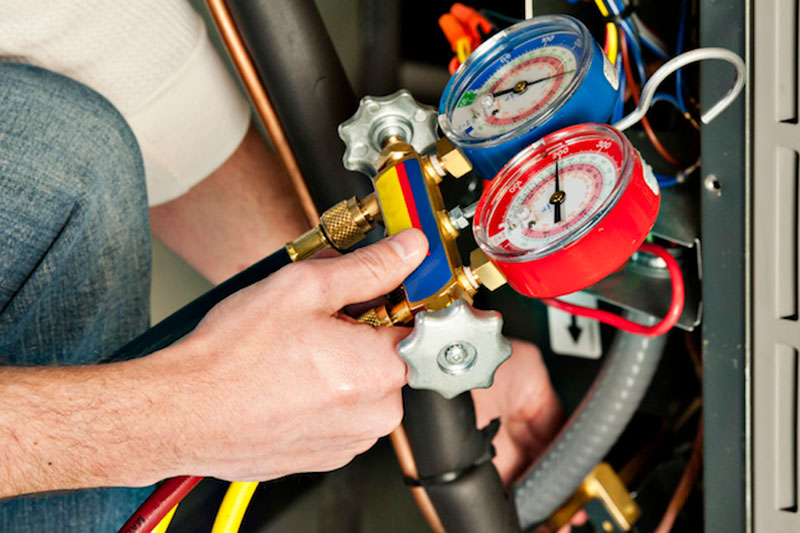
You might not think much about how your air conditioner functions, but it needs refrigerant to keep your house cool. This refrigerant is subject to environmental laws, as it contains chemicals.
Based on when your air conditioner was added to your home, it may use R-22, R-410A or R-32 refrigerant. We’ll discuss the differences and which air conditioner refrigerants are being phased out in The Bay Area, in addition to how these phaseouts affect you.
What’s R-22 and Why Is It Phased Out?
If your air conditioner was added before 2010, it likely has Freon®. You can discover if your air conditioner has it by contacting us at 510-343-9841. You can also inspect the name plate on your air conditioner condenser, which is located outside your home. This sticker will contain information on what kind of refrigerant your AC has.
Freon, which is also referred to as R-22, has chlorine. Scientists consider this chemical to be damaging to the earth’s ozone layer and one that leads to global warming. The Environmental Protection Agency, which controls refrigerants in the United States, outlawed its manufacture and import in January 2020.
I Use an Air Conditioner with R-22. Do I Need to Get a New One?
It differs. If your air conditioning is operating correctly, you can continue to run it. With routine air conditioner maintenance, you can expect your air conditioning to last around 15–20 years. However, the Department of Energy reports that replacing a 10-year-old air conditioner could save you 20–40% on yearly cooling costs!
If you don’t replace your air conditioner, it may cause difficulties if you require air conditioning repair down the road, specifically for refrigerant. Repairs can be more expensive, as only limited amounts of recycled and reclaimed R-22 is on hand.
With the phaseout of R-22, most new air conditioners now have Puron®. Also known as R-410A, this refrigerant was created to keep the ozone layer in good shape. As it requires a varying pressure level, it doesn’t work with air conditioners that need R-22 for cooling.
However, Puron still has the possibility to contribute to global warming. As a result, it may also eventually be discontinued. Although it hasn’t been disclosed yet for residential air conditioners, it’s anticipated sometime this decade.
What Refrigerant Will Take Over R-410A?
In preparation of the discontinuation, some companies have begun using R-32 in new air conditioners. This refrigerant is classified low for global warming likelihood—around one-third less than R-410A. And it also decreases energy consumption by approximately 10%, according to the Intergovernmental Panel on Climate Change’s Fourth Assessment Report. That’s savings that might be sent on to you through your utility bills.
Contra Costa Heating & AC Can Help with All Your Air Conditioning Needs
In short, the alterations to air conditioner refrigerant probably won’t affect you greatly until you require repairs. But as we went over previously, refrigerant repairs can be more costly due to the reduced levels that are accessible.
In addition to that, your air conditioner often breaks down at the worst time, frequently on the warmest day when we’re experiencing a lot of other appointments for AC repair.
If your air conditioner uses a phased out refrigerant or is aging, we advise installing an up-to-date, energy-efficient air conditioner. This provides a hassle-free summer and might even lower your utility bills, especially if you choose an ENERGY STAR®-rated system. Plus, Contra Costa Heating & AC provides many financing solutions to make your new air conditioner work with your budget. Contact us at 510-343-9841 to get started right away with a free estimate.

